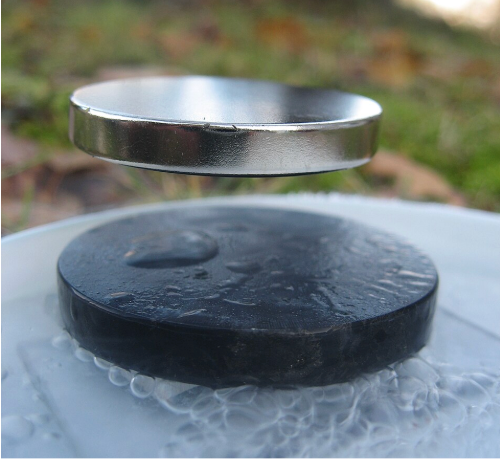Magic Near Absolute Zero: Superfluidity and Superconductivity
- Fiona Hamilton

- Sep 29
- 3 min read
Updated: Oct 2
Imagine you have a bucket of water. As you spin the bucket, the water inside starts to spin with it, creating a whirlpool. If you stop moving the bucket, the water will continue to spin for a moment before spinning to a stop. Now imagine that water is helium that has been cooled to the point of being liquid. Now, when you spin the bucket, the liquid inside stays still, strangely unaffected by the rotation of the container. Now imagine the liquid helium miraculously starts climbing up the bucket until it reaches the edge and starts dripping towards the floor. What is happening?!
The answer is that the helium has become superfluid. When cooled to temperatures near absolute zero, helium turns into a special state of matter called a superfluid. A key sign of

a superfluid is having zero viscosity. This lets the liquid stay still while its container rotates, climb the walls of its container, and flow through capillaries so small that any normal liquid would be unable to flow through.
In the picture to the left, liquid helium is being held in a small bowl while superfluid. The helium is creeping up the bowl and around the edge until it forms a droplet at the bottom of the bowl. Assuming the helium stays superfluid, the bowl should eventually be emptied.
The main element used to examine superfluidity is helium. Specifically, helium-3 and helium-4. Helium-4 is composed of bosons, so it becomes a Bose-Einstein condensation when it reaches its superfluid temperature. Helium-3 is composed of fermions, so it merely imitates a Bose-Einstein condensation at its superfluid temperature. Bosons and fermions form the two primary forms of subatomic particles. The important thing to know when comparing superfluid helium-4 and helium-3 is that helium-4 can be made superfluid much more easily, and helium-3 shows all the symptoms of superfluid helium-4, just less dramatically.
Why are superfluids important? Well, in everyday life, they really aren’t and probably won’t be for a very long time. However, they have high thermal conductivity and can be used as coolants; they’ve been used as detectors of rare particles, and are included in some theories about neutron stars.
Clearly, strange things happen to elements that can stay liquid near absolute zero, but that’s not the extent of it. Some materials can be turned into superconductors at similar temperatures. Like superfluidity, where a liquid has no viscosity, superconductors have zero electrical resistance. This means that an electric current could be maintained in a ring made of a superconductor potentially forever.
Superconductors also have the astonishing ability to expel magnetic fields, a phenomenon called the Meissner effect. Sometimes this expulsion can

overcome the gravity acting on some objects, meaning that with superconductors, some things levitate.
Something that makes superconductors so special is their electron Cooper pairs. At really cool temperatures, electrons pair together, creating what is called a Cooper pair. Normally, electrons repel each other thanks to each having a negative charge. But on a quantum level, the interactions between phonons and electrons can lead to the pairing of electrons at cool enough temperatures. Electrons are fermions, but when paired, they act in some ways as if they are bosons. This has to do with their spin. The moment the electrons go above a certain temperature, though, they gain enough energy to break apart from their Cooper pairs, and the material will no longer superconduct.
Superconducting is already used in everyday life. In South Korea and Japan, there are Maglev trains that reach 373mph thanks to the use of superconductors. Superconductors are actually used in MRIs to create electromagnets that would otherwise melt the moment there was any electrical resistance. Superconductors are also used in quantum computing, which works using the strange properties of quantum mechanics.
Scientists have yet to find a superconductor that works at room temperatures, or even close to it. Finding such a material is considered the “holy grail” of superconductors and would definitely warrant a Nobel prize. Currently, though, the “warmest” superconductors only work below temperatures of 150 Kelvin. For reference, normal days in Waimea are near 300 Kelvin.
Even so, it’s exciting to imagine what we could do with these “magical” materials.
Image credits:
Superfluid_helium-https://commons.wikimedia.org/wiki/File:Liquid_helium_Rollin_film.jpg,
Levatating&Superconductor-https://commons.wikimedia.org/wiki/File:Stable_Levitation_of_a_magnet_on_a_superconductor.jpg
Cover photo: a33 T Bitter magnet at the High Field Magnet Laboratory in Nijmegen by Dick van
Aalst, Radboud University, The Netherlands
Sources:
Superconductors- https://www.livescience.com/superconductor




Comments